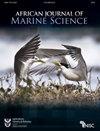DNA微型条形码的应用揭示了南部非洲濒危鲨鱼制品的非法贸易
IF 1.4
4区 生物学
Q3 MARINE & FRESHWATER BIOLOGY
引用次数: 3
摘要
近几十年来,日益增长的需求和经济全球化的结合为油鱼产品创造了一个全球市场,尤其是亚洲市场上备受推崇的鱼翅。形态物种鉴定,以及鱼翅和其他产品的传统细胞色素c氧化酶亚基I(COI)条形码,在加工状态下(如干燥或漂白的鱼翅)变得具有挑战性。在南部非洲涉及不同加工状态下没收鱼翅的案例研究中,应用了一种迷你条形码多重分析法来确定原产物种。这突出表明,南部非洲的非法鱼翅贸易在很大程度上包括受威胁物种。将没收的鳍的序列与公共数据库进行匹配,发现了几个受威胁的物种,包括列入《濒危野生动植物种国际贸易公约》的物种Carcharodon carcharias、Carcharhinus longimanus、Isurus oxyrinchus、Rhynchobatus djiddensis和Sphyrna lewini。这些发现强调了改进贸易监测的必要性,例如消除鱼翅的非法贸易,这在一定程度上可以通过对国际贸易产品进行更广泛的基因采样来实现。然而,一般来说,DNA条形码的一个主要限制在于公共数据库中缺乏经过策划的凭证样本。为了促进分子方法在区域内更全面地评估油膏贸易中的应用,建议共同努力创建可靠的策划序列数据。本文章由计算机程序翻译,如有差异,请以英文原文为准。
Application of DNA mini-barcoding reveals illegal trade in endangered shark products in southern Africa
In recent decades, a combination of increasing demand and economic globalisation has created a global market for elasmobranch products, especially the highly prized shark fins for Asian markets. Morphological species identification, as well as traditional cytochrome c oxidase subunit I (COI) barcoding of shark fins and other products, become challenging when in a processed state (such as dried or bleached shark fins). Here a mini-barcoding multiplex assay was applied to determine the species of origin in case studies from southern Africa involving confiscated shark fins in different states of processing. This highlights that the illegal shark fin trade in southern Africa to a large extent comprises threatened species. Matching of sequences of the confiscated fins against public databases revealed several threatened species, including the CITES-listed species Carcharodon carcharias, Carcharhinus longimanus, Isurus oxyrinchus, Rhynchobatus djiddensis and Sphyrna lewini. The findings highlight the need for improved trade monitoring, such as to eliminate illegal trade in shark fins, which can in part be achieved through more widespread genetic sampling of internationally traded products. However, a major limitation to DNA barcoding in general lies in the lack of curated voucher specimens available on public databases. To facilitate the application of molecular methods in a more comprehensive evaluation of elasmobranch trade regionally, a concerted effort to create reliable curated sequence data is recommended.
求助全文
通过发布文献求助,成功后即可免费获取论文全文。
去求助
来源期刊

African Journal of Marine Science
生物-海洋与淡水生物学
CiteScore
2.60
自引率
16.70%
发文量
17
审稿时长
6-12 weeks
期刊介绍:
The African (formerly South African) Journal of Marine Science provides an international forum for the publication of original scientific contributions or critical reviews, involving oceanic, shelf or estuarine waters, inclusive of oceanography, studies of organisms and their habitats, and aquaculture. Papers on the conservation and management of living resources, relevant social science and governance, or new techniques, are all welcomed, as are those that integrate different disciplines. Priority will be given to rigorous, question-driven research, rather than descriptive research. Contributions from African waters, including the Southern Ocean, are particularly encouraged, although not to the exclusion of those from elsewhere that have relevance to the African context. Submissions may take the form of a paper or a short communication. The journal aims to achieve a balanced representation of subject areas but also publishes proceedings of symposia in dedicated issues, as well as guest-edited suites on thematic topics in regular issues.
 求助内容:
求助内容: 应助结果提醒方式:
应助结果提醒方式:


